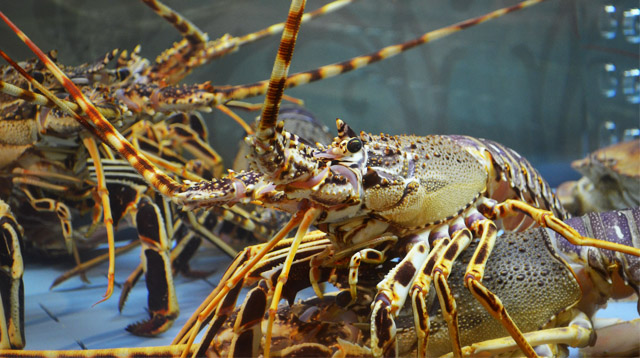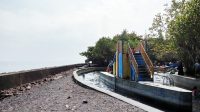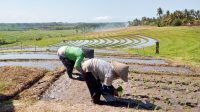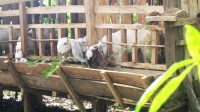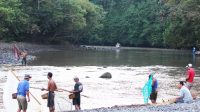- DELICACY of lobster can be imagined and surely will increase our appetite to immediately try and taste
- Here is a short story on how local fishermen of Bali to catch lobster
Lobster is a clawed marine animal and belongs to the crustacean family (Nephropidae, sometimes also Homaridae). As an invertebrate animal, lobster has a hard protective framework.
Lobster has eight walking legs in which the front three pairs have claws. The first is bigger than the others. The front brace is also biologically considered as leg, so they are included in the order of Decapods or ‘ten legs.’ Although lobsters are mostly symmetrical like most other arthropods, some genera have special unequal claws. In general, lobsters have a slightly darker, bluish green or greenish brown color to adapt to the seabed environment, but sometimes they can also be found in several colors. Lobsters live in crevices or holes in the ocean floor.
In Bali, lobster fishing communities catch it using various methods such as traps in the form of bubu (woven bamboo), anca (a combination of nets and iron rings) and plastic nets stretched in shallow and stoney water. Bubu and anca are accompanied with fish bait such as sardines to attract lobster, and then lowered into the sea floor.
Each bubu must be mounted with ballast made of concrete, tied with a rope and then marked with a buoy. After that, it is installed in deep waters. Thus, they will be easily found and taken up on the next day. To bring the traps to the middle of the sea, local fishermen use a jukung or motorized traditional wooden boat.
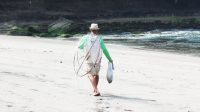
This tool allows lobsters to come into the trap, and it is not possible for large lobsters to come out or come off. Instead, this tool gives the opportunity to small lobsters to come out so that it can prevent excessive lobster catching and maintain its sustainability.
When installing bubu in the sea trough, fishermen are waiting for the sea water to recede. Their traps are installed in the sea channels which are arranged in such a way that they fit in the grooves of the trough and are clipped with a number of wooden sticks so that they are not easily carried away by alternating currents when the seawater tide is rising.
Lobsters caught by fishermen are gathered by collectors until reaching a specified amount. When considered it enough, they will be distributed to supply the needs of hotels and restaurants or even exporters for qualified lobsters. It is the journey that should be taken by lobsters from the bottom of the sea or sea troughs to reach a plate of food on the restaurant table.




